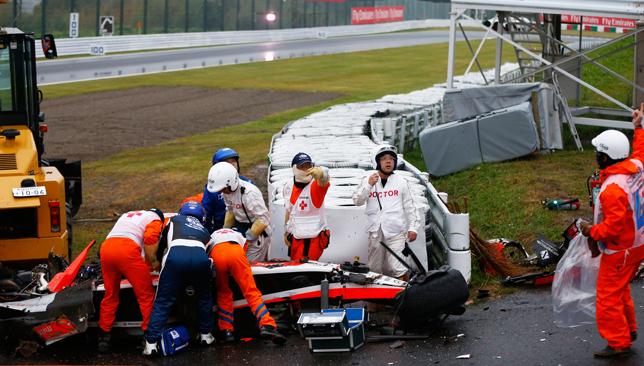
Jules Bianchi’s death shook Formula One and forced it to take a fresh look at safety, two decades after Ayrton Senna’s fatal crash ushered in a series of reforms.
The 25-year-old’s accident last year in Japan, when his Marussia car ploughed into a trackside crane, shocked the sport and brought memories spinning back of Senna’s demise in 1994.
The long vigil for the comatose Bianchi ended nine months later, when the Frenchman finally succumbed to his horrific head injuries in July.
– F1: Singapore Grand Prix drivers ratings
– UAE: Team Abu Dhabi claim second in Texas WEC leg
– F1: Vettel shrugs off track invasion in Singapore victory
He became the first Formula One driver to die from a racing accident since the Brazilian great Senna more than 20 years earlier at San Marino. Senna’s death ushered in a new era of safety awareness which had prevented any further fatal crashes until that rainy Sunday last October.
When Formula One returns to Suzuka this week, in sombre mood, more innovations will be in use which were prompted by the Bianchi tragedy.
The “virtual safety car” is now a commonly used feature that forces drivers to slow to a set speed when there are obstructions on the track.
Bianchi lost control and skidded into the crane, which was retrieving Adrian Sutil’s Sauber after a spin at the same spot, under double yellow flags which warn drivers to cut their speed.
An official investigation later found Bianchi had been travelling too fast in wet conditions at Suzuka, despite the warning yellow flags.
Now, when a section of the track is unsafe, the virtual safety car slows all drivers to the same speed, meaning they maintain their race positions.
At last weekend’s Singapore Grand Prix, when Felipe Massa crashed into Nico Hulkenberg the virtual safety car was deployed immediately.
At mid-session @Matt_vaxiviere still leads the way very close from Jules Bianchi’s lap record of 1:41.241(2012) #WSR pic.twitter.com/hyM0mcamZA
— WorldSeriesbyRenault (@WSR_Live) September 6, 2015
This year, five grand prix starts have been brought forward by one hour to avoid racing in darkening conditions, as were seen in Suzuka a year ago.
Also this season, new nose designs were introduced to make the cars safer and more uniform, banning previous shapes like the “anteater” and “twin tusk”.
And protective panels made of Zylon — which is used to make body armour — were extended on both sides to the rim of the cockpit, alongside the driver’s head.
Bianchi’s death also set off debate about introducing closed cockpits to protect drivers even further, although the move is yet to be adopted.